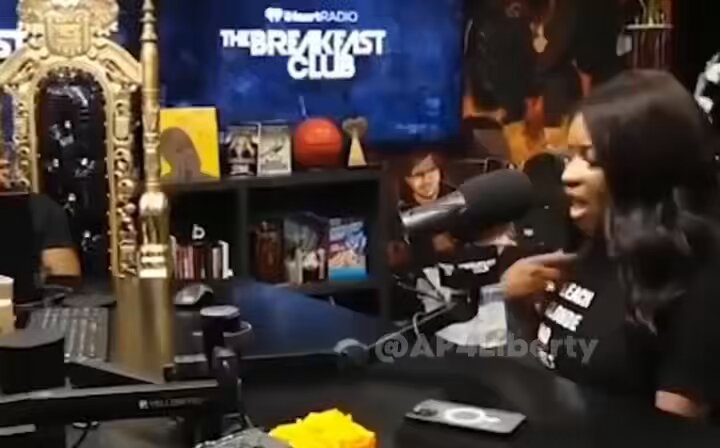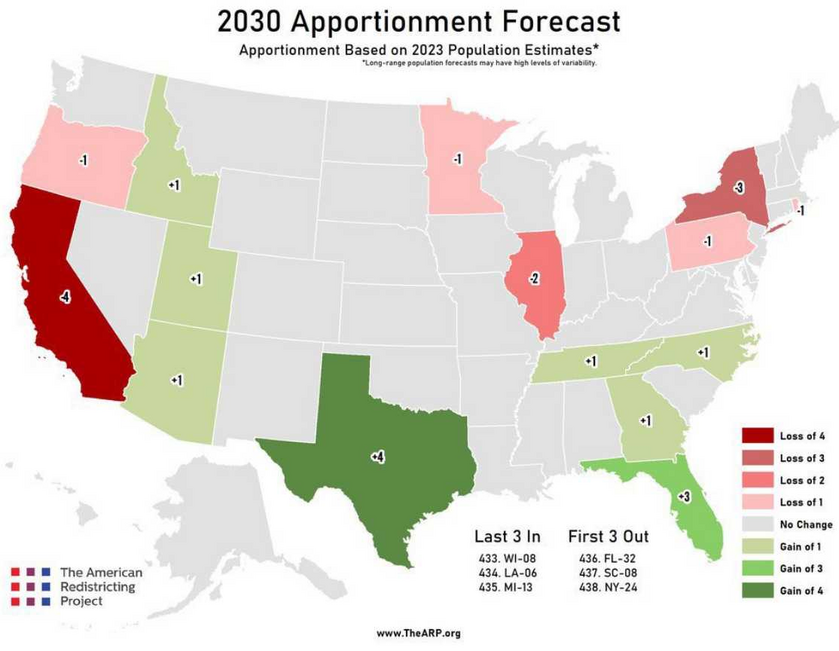
The unrest that swept through Los Angeles and other blue-state cities in 2025 didn’t come out of nowhere. It wasn’t sparked by a single event or enforcement action. It was the visible edge of a deeper political panic. On social media, grassroots activist Scott Presler distilled the moment with striking clarity. Sharing a map of the projected 2030 congressional apportionment, he warned that due to deportation and interstate migration, Democrats could lose “way more than four House seats in California alone.” His message wasn’t partisan cheerleading. It was a plainspoken recognition of a looming demographic collapse for the Democratic Party. The map he posted tells the story: red states gaining representation, blue states bleeding seats and influence. The protests, Presler implied, weren’t just about immigration; they were about protecting the census math that sustains Democratic control. And that map may explain more about 2025 than any headline.
The Census Clock Is Ticking
Right now, Los Angeles streets are erupting. College campuses turned chaotic. Protesters surrounded ICE field offices. Pundits framed it as a moral battle over immigration. But behind the slogans and signs lies a quieter truth, one that’s not about race, justice, or compassion. It’s about power.
What we’re witnessing isn’t a spontaneous uprising. It’s a coordinated defense of a political system built on population counts. As @The_Prophet_ put it bluntly, “The protests, the riots, the sanctuary city breakdowns. They’re not reactive. They’re preemptive pressure campaigns triggered by the ruling class to preserve the only thing that keeps their machine alive: census-based political power.”
The anger on display isn’t about culture. It’s about arithmetic. And the countdown to the 2030 Census is the clock no one in Washington can afford to ignore.
Why Apportionment Matters
In the United States, representation in the House of Representatives and (by extension, the Electoral College) is based on total population, not citizenship. That means every person residing in a state, including those here illegally, affects how much power that state has in Washington.
For decades, states like California, New York, and Illinois benefited from this arrangement. Mass immigration (both legal and illegal) swelled their populations and expanded their influence. But that advantage is beginning to unravel. Deportations, domestic migration to red states, and declining blue-state birth rates are all contributing to a reshaping of the political map. The 2030 Census will formalize what many already sense: the old Democratic strongholds are losing ground.
The 2030 Forecast: A Shifting Map
According to the American Redistricting Project’s forecast, based on 2023 population estimates, the 2030 Census is set to trigger a dramatic redistribution of political power. California is projected to lose four congressional seats, while New York is expected to lose three. Illinois follows with a loss of two. Six additional states (Michigan, Minnesota, Pennsylvania, Oregon, Rhode Island, and West Virginia) are each projected to lose one seat, marking a broad contraction across long-held Democratic strongholds.
On the other side of the ledger, red and right-trending states are gaining ground. Texas is projected to gain four seats, and Florida is close behind with three. Arizona, Georgia, North Carolina, Utah, Idaho, and Tennessee are each expected to pick up one seat. In total, this amounts to a net shift of 14 congressional seats from blue America to red which would be an electoral and legislative realignment with far-reaching consequences.
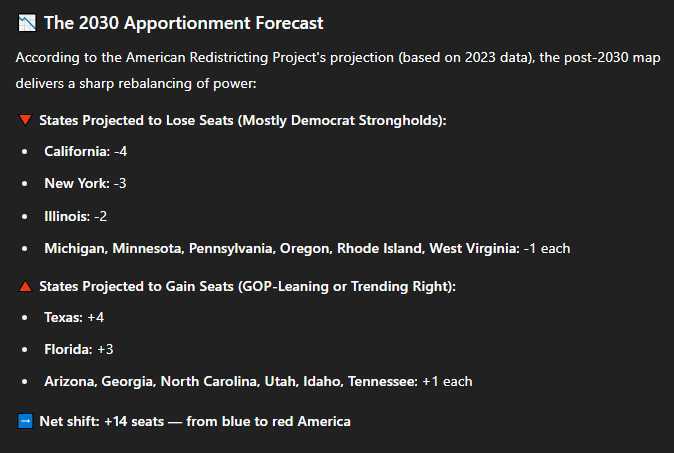
A Look Back: What If the 2030 Map Had Been in Place?
The 2022 midterm elections delivered a narrow Republican majority, with the GOP winning 222 seats to the Democrats’ 213 under the existing 2020 apportionment. However, if the projected 2030 congressional map had been in place, the outcome would have looked significantly different.
Republicans would have picked up 11 additional seats from growing states such as Texas (+4), Florida (+3), and others including Arizona, Georgia, North Carolina, Utah, Idaho, and Tennessee (each gaining +1). At the same time, Democrats would have lost 13 seats due to projected declines in population-heavy blue states like California (−4), New York (−3), and Illinois (−2), along with single-seat losses in Michigan, Minnesota, Pennsylvania, Oregon, Rhode Island, and West Virginia.
Altogether, this would translate into a net GOP advantage of 24 seats. The adjusted House balance under the 2030 map would be 246 Republicans to 189 Democrats and an overwhelming majority. Under that kind of congressional landscape, a future Republican president would have the legislative runway to reshape national policy with little resistance.
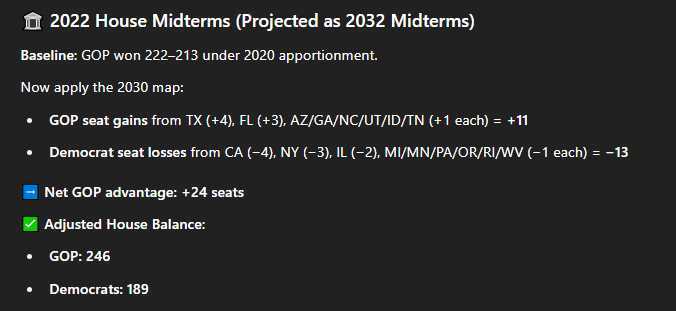
2024 in Retrospect: Trump’s Victory, Amplified
In 2024, Donald Trump returned to the White House after defeating Kamala Harris with 312 electoral votes. He reclaimed key battlegrounds like Georgia, Arizona, and Wisconsin, reshaping the post-Biden electoral landscape.
But under the 2030 electoral map, his margin of victory would have been even larger. States he carried like Texas, Florida, and others in the Sunbelt, are gaining electoral votes. Blue states he lost are shedding them. Trump’s adjusted total would have risen to 325. Harris would have fallen to just 212. No vote totals changed, but the math did.
And it’s that math that has Democrats sounding the alarm, not just for today, but for what’s coming.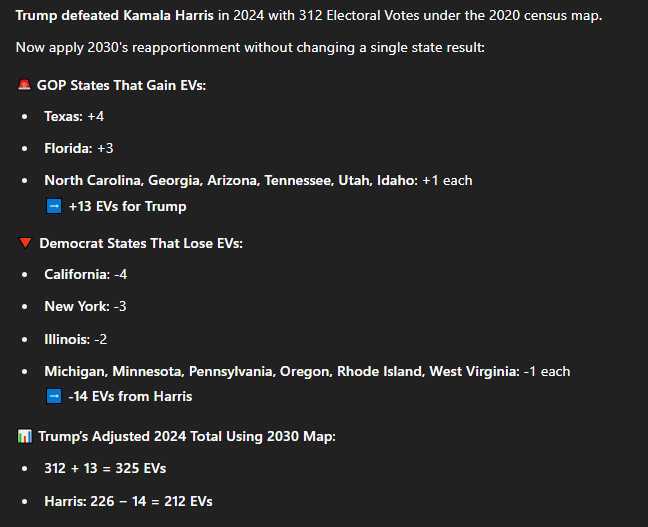
Looking Ahead: JD Vance and the 2030 Race
If the political trends hold and JD Vance inherits Trump’s coalition heading into the 2030 election, he will begin the campaign with a baked-in advantage. Based on current population projections, the Electoral College will tilt even further in the GOP’s favor. Vance could lose Pennsylvania or Nevada and still win handily.
The path to victory for Democrats will narrow unless they reverse migration trends or replace lost population through new waves of immigration. Without that, the political map is likely to remain red-leaning into the next decade.
The Left’s Fear of the Numbers
Political analyst Larry Schweikart has described it starkly: “If President Trump deports just TWO million, the electoral equation changes badly for DemKKKcrats. If he deports TEN million, DemoKKKrats will never win another national election.”
That isn’t hyperbole. Deportation and migration don’t just affect local communities; they determine national representation. Every person removed from a blue state through deportation or outbound migration is one fewer counted in the census, one less seat in Congress, and one less electoral vote in the next presidential race.
Inside the Unrest: Organized, Not Organic
These protests are not simply moral expressions. They are part of a broader political operation. Journalist Eric Daugherty reported that the Coalition for Humane Immigrant Rights of Los Angeles (CHIRLA), a group linked to Democratic fundraising platform ActBlue, was involved in organizing the unrest. CHIRLA, which has received government funding, helped lead protests in coordination with activist networks and media allies.
The strategies were multifaceted:
Flood the media with narratives of ICE oppression to build public backlash.
Mobilize “rights-based” protests through NGOs like United We Dream.
Sue the federal government to block efforts to exclude non-citizens from census counts.
Pass state-level sanctuary policies to prevent population loss.
Provoke federal enforcement actions to portray deportation as fascism.
None of this was accidental. It was calculated.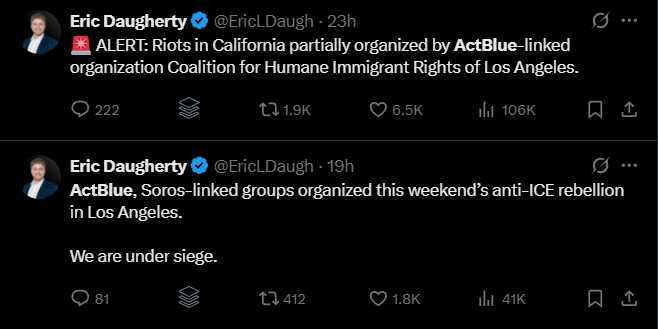
2032 Midterms: The GOP’s Moment?
Assuming JD Vance wins in 2030, the 2032 midterms could solidify long-term Republican control. With Democrats already projected to lose 13 seats through reapportionment, the structural math is not on their side. If Vance experiences a typical first-term midterm bump, Republicans could approach 260 House seats. Senate control could follow, particularly if rightward shifts in states like Arizona, Georgia, and Pennsylvania continue.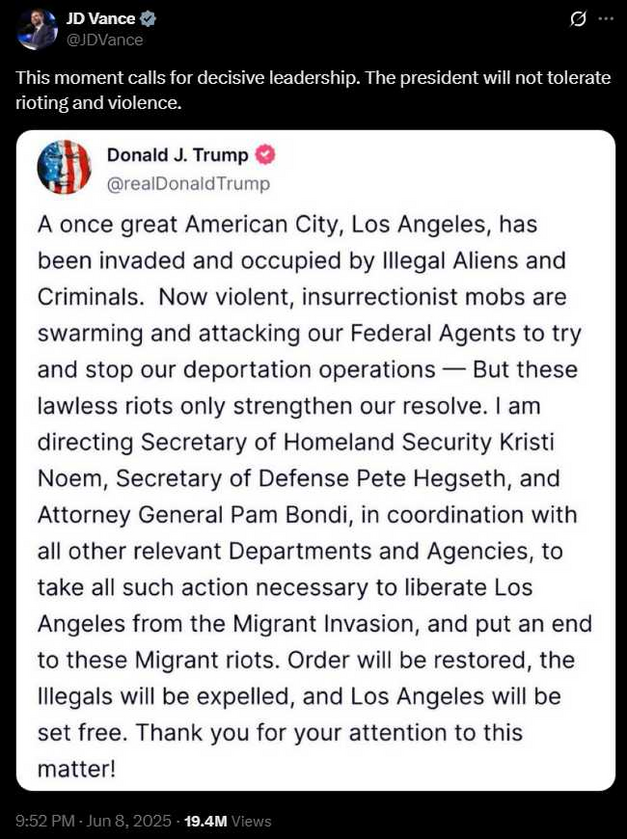
In the end...The Census Is the Battlefield
These ICE riots were never just about immigration policy. They were about safeguarding political survival. The Democratic Party’s national strength depends on counting people (millions of them) who don’t vote but still impact power. If those people disappear from the census, the foundation of that strength crumbles.
That’s why protests were organized. Why lawsuits were filed. Why narratives were launched before enforcement even began.
Because what the Left fears most isn’t deportation. It’s what comes after.
Disempowerment.
The census is no longer a bureaucratic process. It’s the frontline of the next political war. And it may determine who holds power in America for the next generation.

